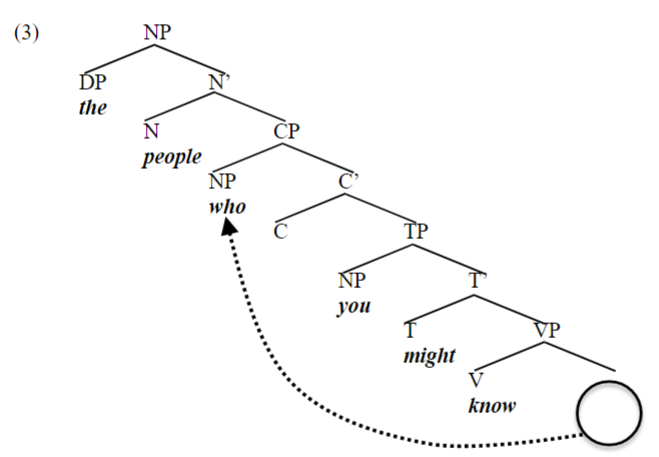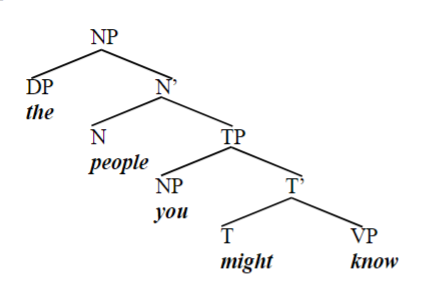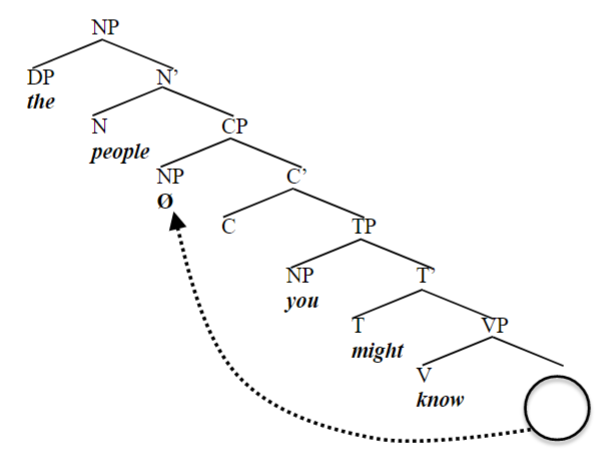Due: Session 21
Part One
Draw a tree for the following sentence. Don’t use triangles.
(1) Because it was raining, the purple ants were devoured.
Part Two
Consider the sentence in (2):
(2) These are the people [who you might know].
Here’s a tree we might posit for the structure of the NP at the end of (2):

In (3), who starts off as the object of know, and undergoes wh-movement to the specifier of CP. We have so far only seen wh-movement in questions, but the CP in (3) isn’t a question; it’s a relative clause, a kind of clause which modifies a noun.
The sentence in (4) seems to mean more or less the same thing as the one in (2):
(4) These are the people [you might know].
Here are two theories we might have about the structure of (4).
Theory #1: the NP at the end of (4) has no CP, and no wh-movement. Know simply lacks a complement:
(5)

Theory #2: the NP at the end of (4) has a CP, and wh-movement; it differs from (2) in that the phrase which is wh-movement is not pronounced (I’ve represented it here with a Ø symbol).
(6)

How do the data in (7–10) bear on the choice between these theories?
(7) *These are the people you might know my cousin and.
(8) *These are the people you might think that will win the race.
(9) These are the people you might think will win the race.
(10) *These are the people you are wondering where you met.
(Assume that the sentences I’ve given * to are in fact ungrammatical…though if this is not true for you, please feel free to tell us so!)
Part Three
In the language you are working on, try to form at least one wh-question that violates one or more of the conditions on movement that we talked about in class. Does the language you are working on exhibit these conditions? Not every language does, so it’ll be interesting to see what you manage to find out. If your language doesn’t move wh-phrases, that’s fine; find out how the speaker feels about sentences in which the wh-phrase is pronounced inside an island.
In order to get information about island violations, you should probably first try to form a related well-formed wh-question, and then construct the island without wh-movement, and finally create the example with wh-movement out of an island. For example, if you decide you want to look for the effects of the Coordinate Structure Constraint, you would first want to ask for a coordinate structure; find out how to say “She ate a cookie and an apple” (substituting whatever food seems culturally appropriate). Then find out how to say “What did she eat?” You will hopefully then be in a position to combine the sentences you’ve gotten, so that you can find out how to say “What did she eat a cookie and?”,. and find out whether this is as ungrammatical in the language you’re studying as it is in English.








